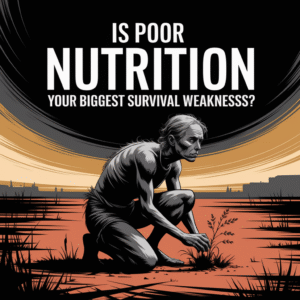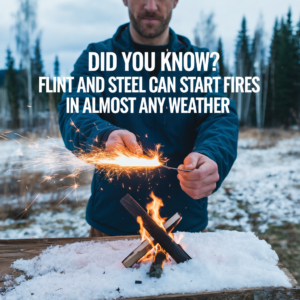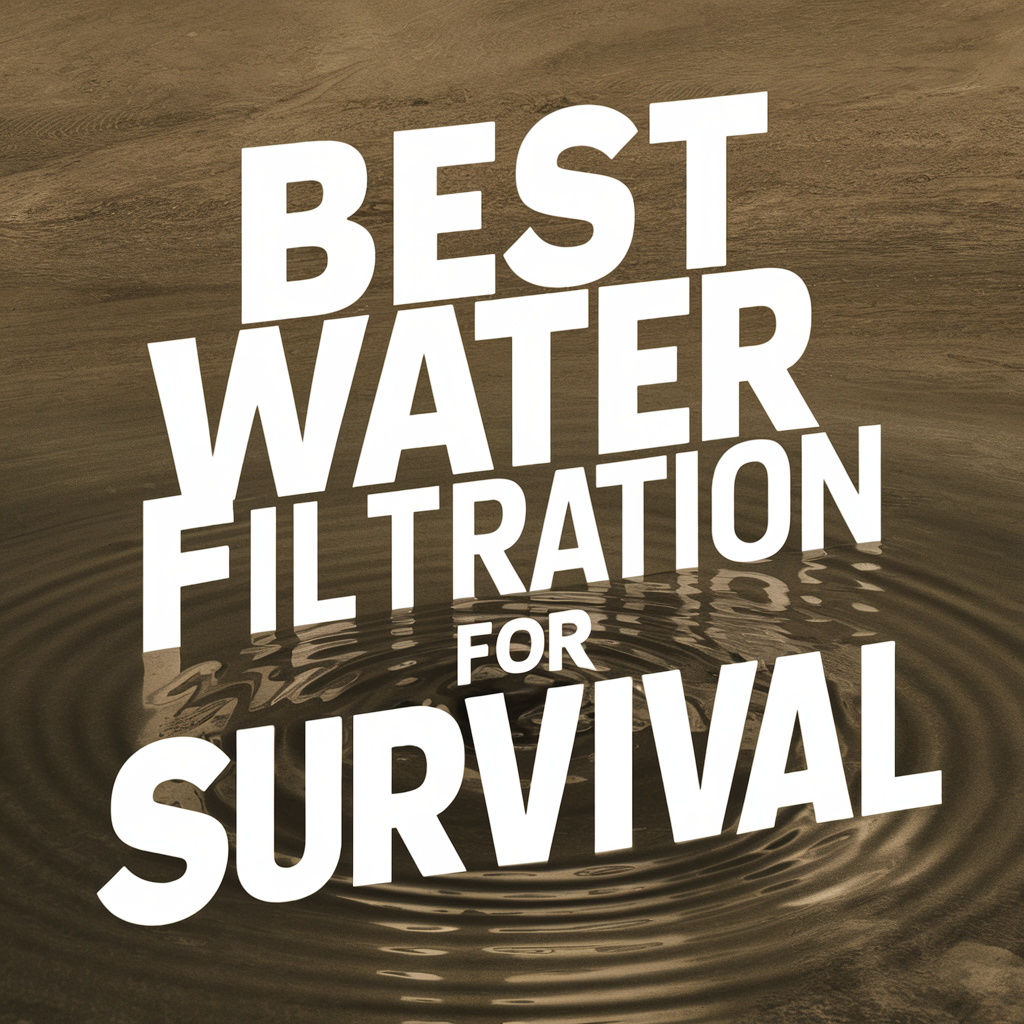
Why Is Water Filtration Crucial for Survival?
When you’re out in the wild, clean drinking water is more than just a luxury—it’s an absolute necessity. From my years of experience in survival situations, I’ve learned that survival water purification is one of the most important skills you can master. But even if you know the techniques, having the best water filtration for survival can make all the difference between staying healthy and facing serious health risks.
Untreated water, no matter how clear it looks, can be riddled with harmful bacteria, viruses, and parasites. These contaminants can lead to severe illness, which, in a survival scenario, could be life-threatening. That’s why I always emphasize the importance of reliable water filtration systems as a crucial part of your survival gear. Whether you’re planning a multi-day hike, a camping trip, or preparing for an emergency, understanding the right tools and techniques for water filtration is key to ensuring your safety.
In this guide, we’ll explore what makes a water filtration system the best for survival, compare different types of filtration systems, and discuss how to choose the right one based on your specific needs. Let’s dive in and make sure you’re fully prepared for whatever the wild throws at you.
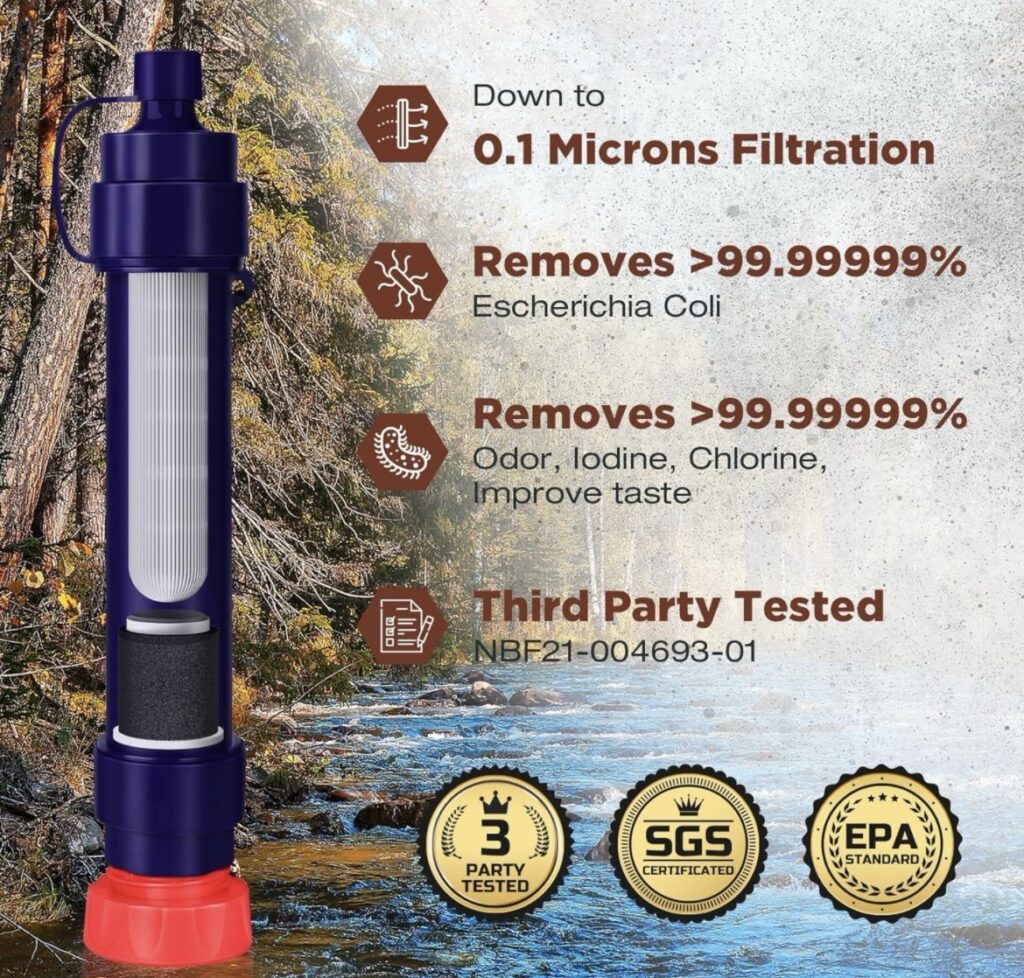
What Are the Key Features of the Best Water Filtration for Survival?
When it comes to selecting the best water filtration for survival, not all systems are created equal. Over the years, I’ve tried and tested various filters, and there are a few key features that really set the best ones apart. If you’re serious about staying safe in the wild, here’s what you should be looking for in a survival water filtration system.
1. Filtration Efficiency
- What to Look For: The primary job of any water filter is to remove harmful contaminants. The best filters should effectively eliminate bacteria, parasites, and even viruses from your water supply. Look for filters that have a pore size of 0.1 microns or smaller, which can remove most harmful pathogens. This level of filtration ensures that the water you drink is as safe as possible.
- Real-World Application: In my experience, having a filter that can handle a variety of contaminants is crucial, especially when you’re unsure of the water source. For instance, water from a clear mountain stream may still harbor dangerous pathogens, and a high-efficiency filter will give you peace of mind.
2. Portability
- What to Look For: When you’re on the move, every ounce counts. The best water filtration systems for survival are lightweight and easy to carry. Portability is key because you don’t want to be weighed down by bulky gear when you’re trekking through the wilderness.
- Real-World Application: I’ve found that straw filters, like the Membrane Solutions Water Filter Straw, are ideal for this purpose. They’re compact, lightweight, and fit easily into your pack or even your pocket. This makes them perfect for quick access when you need to hydrate on the go.
3. Durability and Lifespan
- What to Look For: Your water filter needs to be tough enough to withstand harsh conditions. The best filters are built to last, capable of filtering thousands of liters of water before needing replacement. Durability ensures that your filter won’t fail when you need it most.
- Real-World Application: In survival situations, you never know how long you’ll need to rely on your gear. That’s why I always choose filters that are proven to be durable and have a long lifespan. It’s one thing to have a filter that works well at the start, but you need one that continues to perform reliably over time.

Choosing the best water filtration for survival means understanding what features are most important for your specific needs. Filtration efficiency, portability, and durability are the top three factors that I always prioritize. With the right filter, you can ensure that no matter where you are, you’ll have access to safe, clean drinking water.
For a deeper dive into why water purification is so crucial, check out my comprehensive guide on survival water purification. It covers everything you need to know to stay safe and hydrated in the wild.
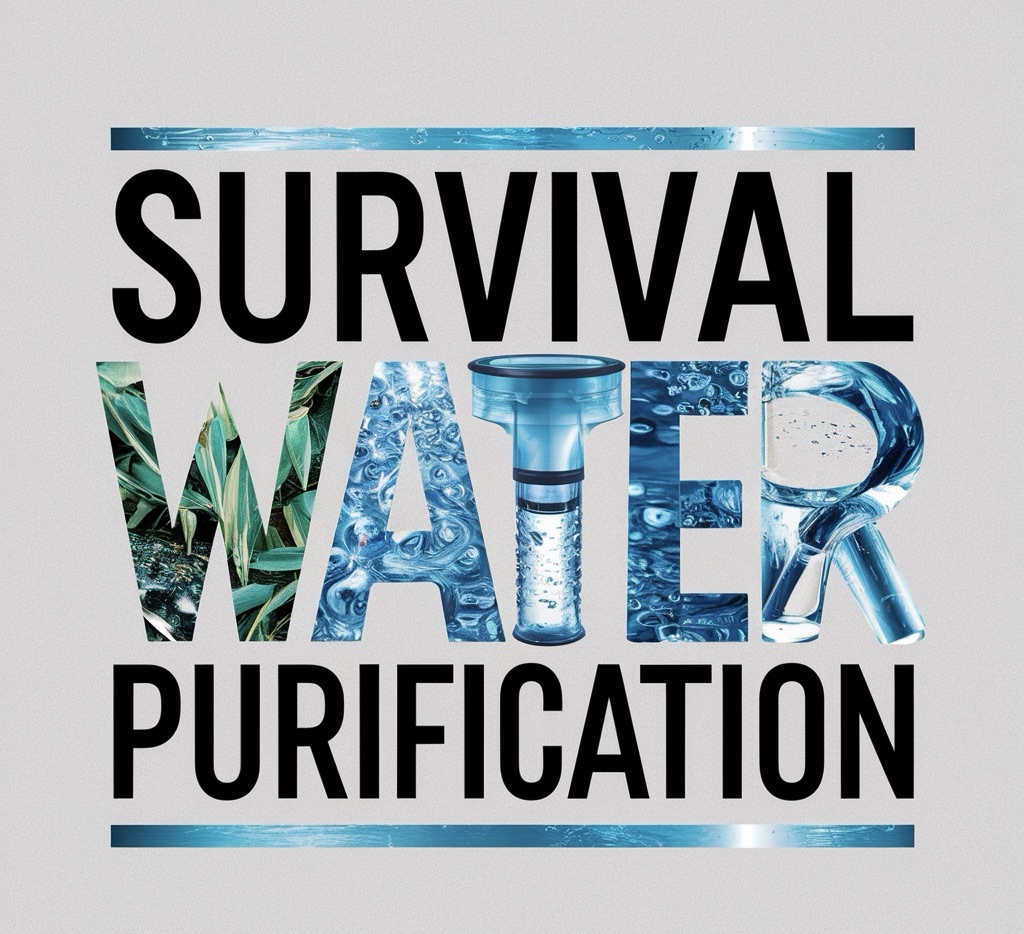
What Types of Water Filtration Systems Are Best for Survival?
Choosing the right water filtration system for survival isn’t just about picking the first filter you come across. Different scenarios call for different tools, and understanding the pros and cons of each type can help you make the best decision for your situation. Let’s break down some of the most common types of water filtration systems and see which ones might work best for you.
1. Straw Filters vs. Pump Filters: Which is Better?
- Straw Filters:
- Pros: Straw filters, like the Membrane Solutions Water Filter Straw, are incredibly lightweight and portable. They’re designed for individual use and are perfect for on-the-go hydration. Just dip the straw into the water source and drink directly through it. The simplicity and convenience of straw filters make them a favorite for solo hikers and emergency kits.
- Cons: The main drawback is that straw filters are typically only suitable for immediate drinking and not for filtering large quantities of water. If you need to purify water for cooking or long-term storage, you might need a more robust solution.
- Pump Filters:
- Pros: Pump filters are great for filtering larger volumes of water. They’re more versatile than straw filters, allowing you to pump clean water into a container for later use. This makes them ideal for group survival situations or when you need to purify water for cooking.
- Cons: On the downside, pump filters are bulkier and require more effort to use. They also tend to be more expensive and may require more maintenance to keep them functioning properly.
2. Gravity-Fed Filters: When Should You Use Them?
- Pros: Gravity-fed filters are excellent for base camps or when you’re setting up a longer-term survival situation. These filters work by hanging a water-filled bag above the filter system, allowing gravity to pull the water through the filter and into a clean container. They’re capable of filtering large amounts of water with minimal effort, making them a great option for families or groups.
- Cons: However, gravity-fed filters are less portable and take longer to filter water compared to straw or pump filters. They’re best used when you’re stationary rather than on the move.
3. Chemical Purification vs. Mechanical Filtration: Which is Right for You?
- Chemical Purification:
- Pros: Chemical purification methods, like iodine tablets or chlorine drops, are lightweight, easy to carry, and effective at killing bacteria and viruses. They’re a good backup method if your primary filter fails or if you’re in a situation where mechanical filtration isn’t possible.
- Cons: The downside is that chemical treatments can leave an unpleasant taste in the water and may not remove chemical contaminants or sediment. They also take time to work, which can be a drawback in a survival scenario where immediate hydration is needed.
- Mechanical Filtration:
- Pros: Mechanical filters physically remove contaminants from water and can be used repeatedly, making them a reliable long-term solution. They don’t add any chemicals to the water, so the taste remains unchanged.
- Cons: These filters can become clogged with sediment over time and may require cleaning or replacement parts. They’re also generally bulkier and heavier than chemical treatments.
Understanding the strengths and limitations of each type of water filtration system is crucial when preparing for survival situations. Whether you opt for the portability of a straw filter, the versatility of a pump filter, or the capacity of a gravity-fed system, the key is to choose what works best for your specific needs.
For a more comprehensive understanding of how these filtration systems fit into broader survival strategies, check out my detailed guide on survival water purification. It’s packed with tips on ensuring your water is safe, no matter the situation.
When it comes to learning more about survival, knowing how to make a DIY Emergency Shelter is also great knowledge to have.
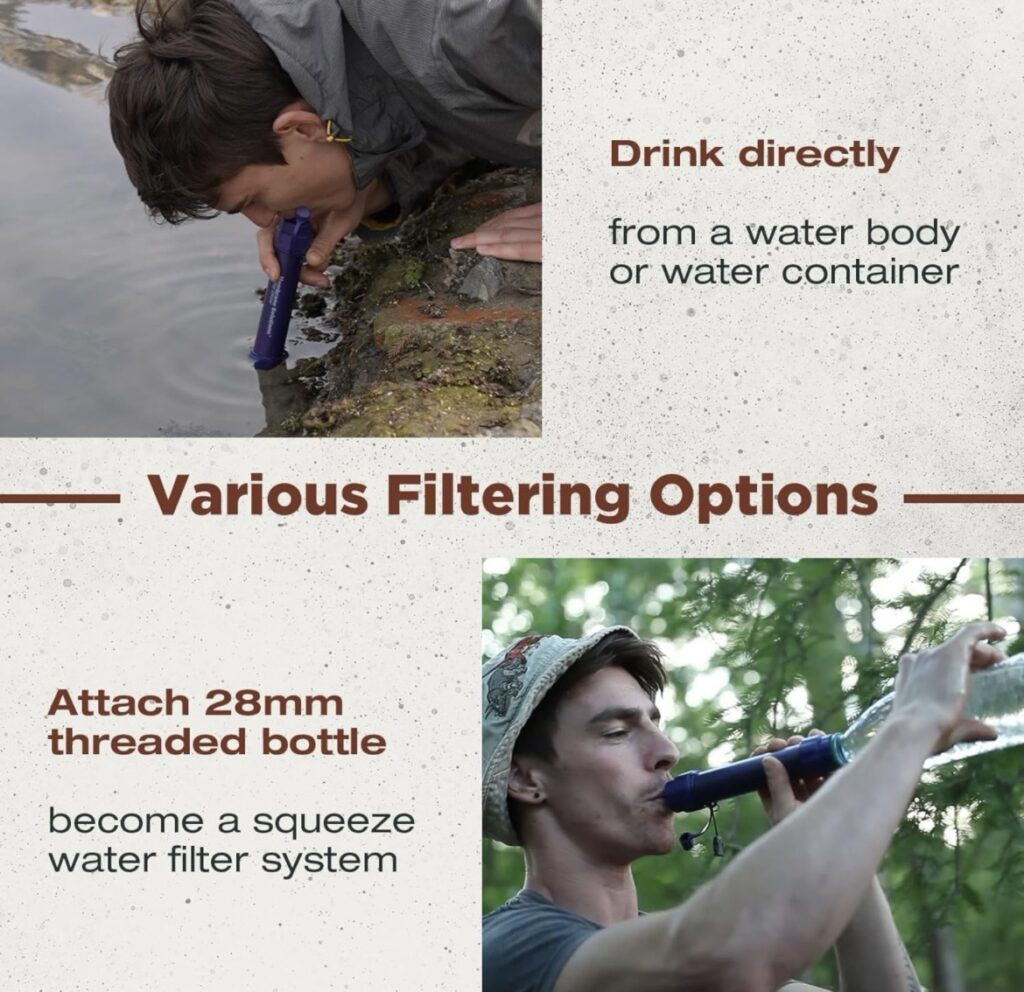
How to Choose the Best Water Filtration for Your Survival Scenario
When it comes to survival, one size definitely doesn’t fit all. The best water filtration for survival depends heavily on your specific scenario—whether you’re in a desert, deep in a forest, or navigating an urban disaster. Choosing the right filter means assessing your environment, your needs, and how you’ll be using the water. Here’s how to make the best choice based on different survival scenarios.
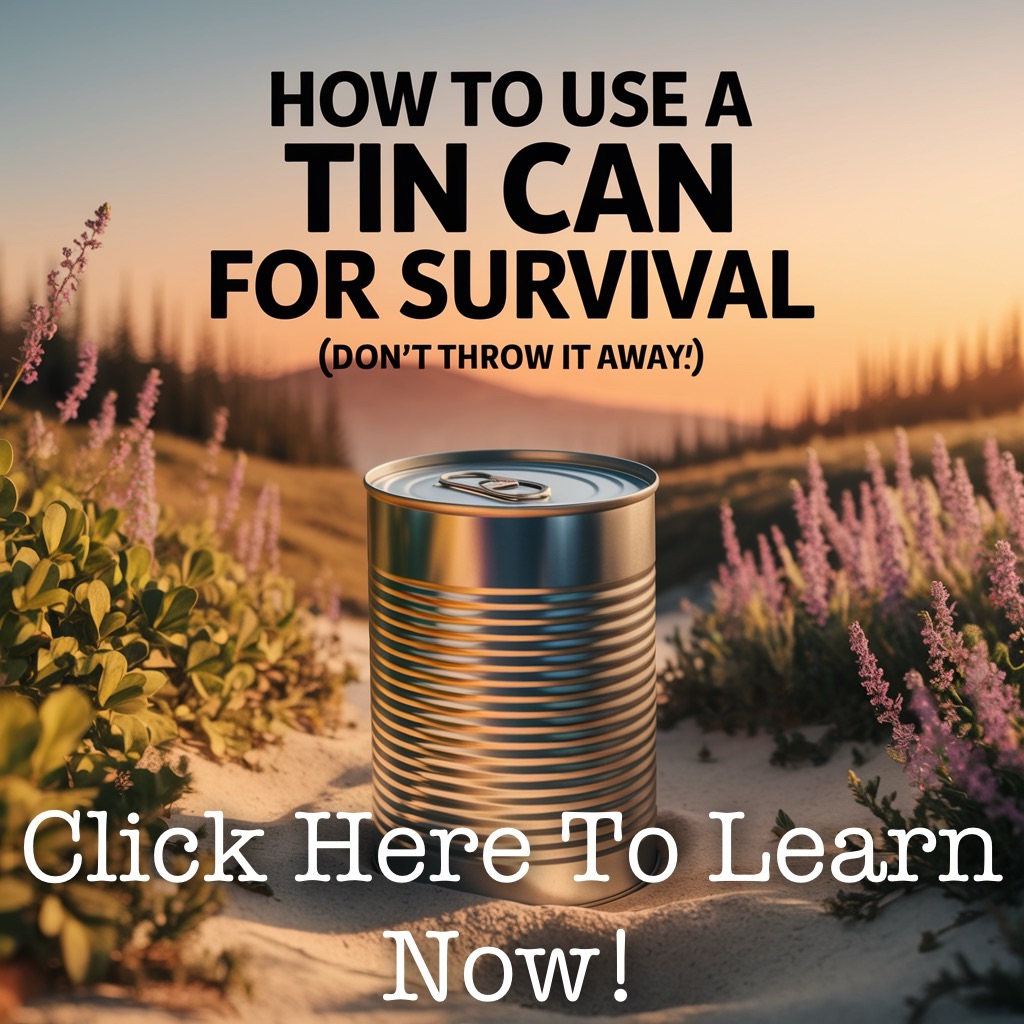
1. How Does Your Environment Affect Your Water Filtration Choice?
- Desert Survival: In arid environments, water sources are scarce, and the few that exist might be stagnant or heavily contaminated. Here, you’ll need a filter that’s highly effective at removing bacteria and sediment, like a pump filter or a high-quality straw filter. Chemical purification can be a backup, but it’s not always effective against the types of contaminants found in desert water sources.
- Forest or Jungle Survival: In lush environments, water is more abundant but often contaminated with organic matter and pathogens from animals. A portable filter like the Membrane Solutions Water Filter Straw is ideal for these areas due to its ability to filter out harmful microorganisms quickly. For longer stays, a gravity-fed system might be better, especially if you’re setting up a base camp.
- Urban Survival: In urban disaster scenarios, water sources might be contaminated with chemicals or heavy metals. Here, a filter that also handles chemical contaminants is essential. Consider combining mechanical filtration with chemical purification tablets to ensure the water is safe to drink.
2. Are You Preparing for Group or Solo Survival?
- Group Survival: If you’re in a group, you’ll need to filter larger quantities of water. Gravity-fed systems are excellent for this, as they allow you to purify several liters at once with minimal effort. Pump filters can also work well for groups, particularly if you’re on the move and need to refill everyone’s bottles quickly.
- Solo Survival: For solo survival, portability is key. Straw filters and small pump filters are ideal because they’re lightweight and easy to carry. You can quickly filter water as you go, without needing to set up complex systems. The Membrane Solutions Water Filter Straw, for example, is perfect for solo hikers and survivalists who need something reliable but compact.
3. Why Is Emergency Preparedness Important?
- Backup Filtration: No matter how good your primary filtration system is, it’s wise to have a backup. Carrying chemical purification tablets or a second filter can save you if your main filter gets clogged or damaged. This redundancy is crucial in survival situations where water is your lifeline.
- Multi-Use Systems: Look for filtration systems that can serve multiple purposes. Some filters come with attachments that allow you to connect them to different types of water containers or use them as a gravity-fed system. These versatile tools can be invaluable when conditions change or when you need to adapt quickly.
Choosing the best water filtration for survival isn’t just about picking the most expensive or high-tech option—it’s about understanding your specific needs and environment. By assessing where you’ll be and what you’ll be doing, you can select the filtration system that will keep you safe and hydrated in any survival scenario.
For more on preparing for different survival scenarios, and how water purification fits into the bigger picture, be sure to check out my detailed guide on survival water purification. It covers everything you need to know to stay ready and resilient in the wild.

Is the Membrane Solutions Water Filter Straw the Best Option for Survival?
When it comes to choosing the best water filtration for survival, the Membrane Solutions Water Filter Straw is a top contender. In my experience, having a reliable, portable water filter can make all the difference in a survival situation, and this particular straw filter is a standout for several reasons.
What Makes the Membrane Solutions Water Filter Straw Effective?
- Advanced Filtration: This straw filter is equipped with a 0.1-micron filtration membrane, which is capable of removing 99.9999% of bacteria (like E. coli) and 99.9% of parasites (such as Giardia and Cryptosporidium). It also filters out microplastics and sediment, ensuring that you’re drinking clean, safe water even from questionable sources.
- Portability: Weighing just a few ounces, this straw filter is incredibly lightweight and compact. It’s easy to slip into your backpack or even your pocket, making it ideal for situations where space and weight are at a premium. Whether you’re hiking through dense forests or traveling light, this filter won’t weigh you down.
- Ease of Use: One of the biggest advantages of the Membrane Solutions Water Filter Straw is how easy it is to use. Simply place the straw into the water source and drink directly through it. There’s no need for pumps, chemicals, or waiting for the water to purify—just instant access to clean drinking water.
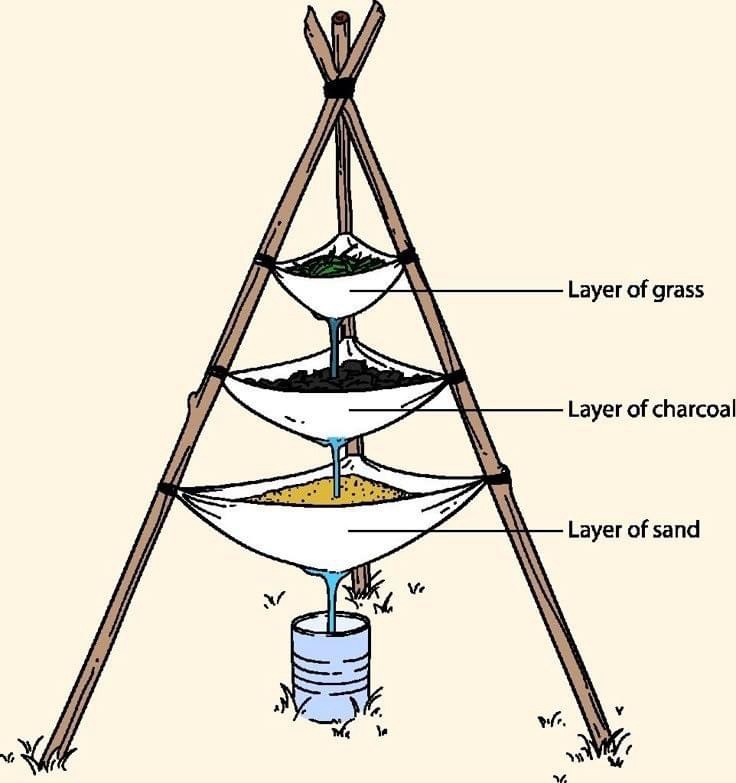
How Does It Compare to Other Survival Water Filters?
- Versatility: While pump and gravity-fed filters are great for large groups or long-term use, they can be bulky and time-consuming to set up. The Membrane Solutions Water Filter Straw, on the other hand, is perfect for solo survivalists or quick hydration stops. It’s a versatile tool that works well in conjunction with other filtration methods if you need to purify larger quantities of water.
- Durability: This straw filter is built to last, capable of filtering up to 5,000 liters of water before needing replacement. That’s a significant amount of water for such a small device, making it a reliable choice for both short-term outings and longer survival situations.
Practical Use Cases:
- Emergency Kit Essential: I always include the Membrane Solutions Water Filter Straw in my emergency kit. Its compact size and effectiveness make it an essential tool for any survival situation, whether I’m caught in a natural disaster or spending a few days off the grid.
- Travel and Hiking: This filter is also perfect for international travel or hiking in areas where water quality is uncertain. It’s small enough to carry anywhere and provides peace of mind that you can access clean water wherever you are.
If you’re serious about being prepared, the Membrane Solutions Water Filter Straw is one of the best investments you can make in your survival gear. It’s simple, effective, and, most importantly, reliable when you need it most.
To learn more about why water filtration is so crucial in survival situations, check out my guide on survival water purification. It covers a range of methods and tools that can help you stay safe and hydrated in the wild.
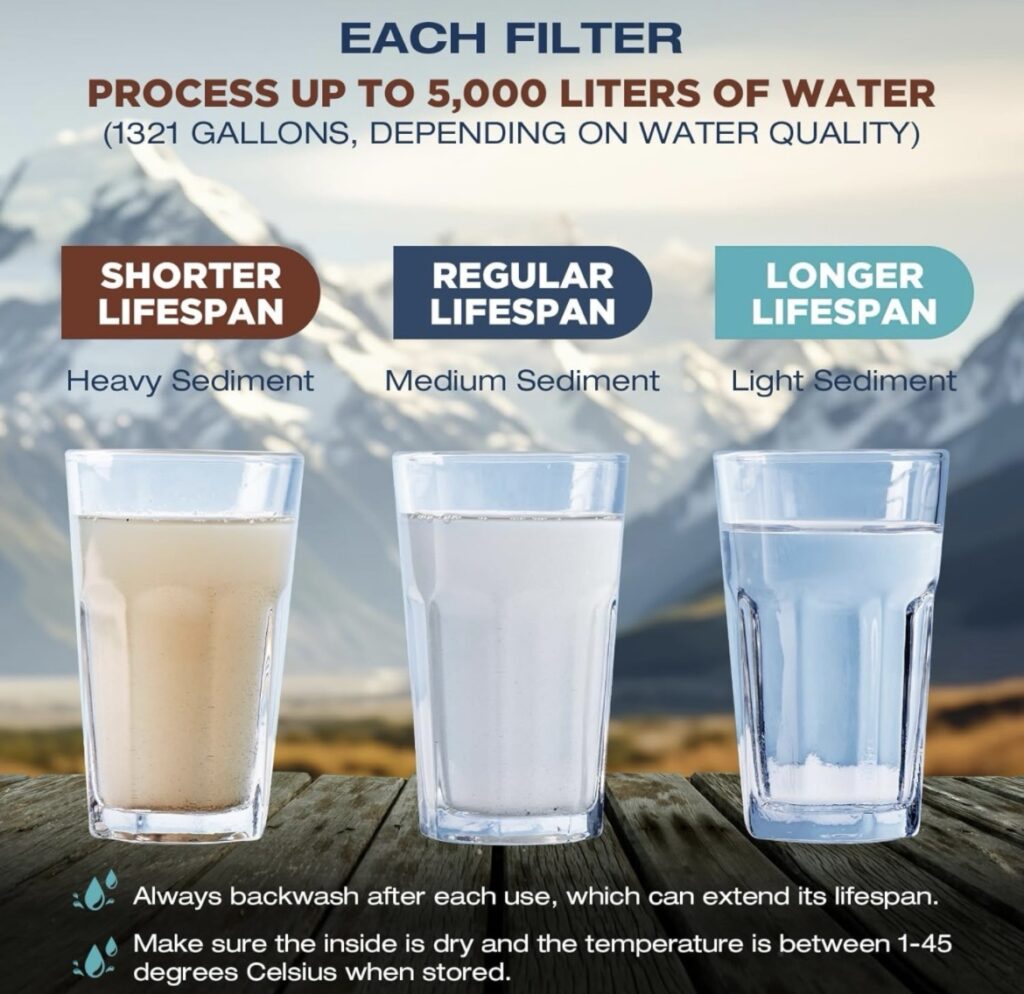
Top Tips for Using the Best Water Filtration Systems in the Wild
Having the best water filtration for survival is crucial, but knowing how to use it effectively is just as important. Over the years, I’ve picked up a few tips and tricks that can help you get the most out of your filtration system, ensuring that your water is always safe to drink, no matter the situation.
How Do You Properly Maintain Your Water Filter?
- Regular Cleaning: After each use, make sure to clean your filter according to the manufacturer’s instructions. For straw filters like the Membrane Solutions Water Filter Straw, this might involve backflushing to remove any trapped debris. Keeping your filter clean ensures it continues to work effectively and extends its lifespan.
- Storage Tips: When you’re not using your filter, store it in a clean, dry place. Avoid letting it sit in wet or dirty environments, as this can encourage mold or bacteria growth inside the filter. For long-term storage, ensure the filter is completely dry before packing it away.
Why Should You Combine Filtration with Other Purification Methods?
- Layering Techniques: While the best water filtration for survival systems are highly effective, combining them with other purification methods can provide an extra layer of safety. For example, after filtering water through your straw filter, you can boil it to kill any remaining viruses or use purification tablets to ensure chemical contaminants are neutralized.
- Practical Scenarios: In particularly risky environments—like near agricultural runoff or in stagnant water sources—layering filtration and purification methods is essential. This approach maximizes your chances of removing all harmful pathogens and contaminants.
What Are the Best Practices for Storing and Transporting Filtered Water?
- Use Clean Containers: Always store filtered water in clean, sanitized containers. If your container isn’t clean, you risk contaminating the water again. Collapsible water containers are great for portability and can be easily packed away when not in use.
- Transporting Water: If you’re on the move, consider how you’ll transport your water without contaminating it. Keep the container sealed and avoid letting the spout or lid come into contact with dirty surfaces. When hiking, I usually carry a small bottle of filtered water for immediate use and a larger container for storage.

How Can You Extend the Life of Your Water Filtration System?
- Avoid Clogging: Pre-filtering water through a cloth or bandana before it enters your main filter can help prevent clogging. This is particularly useful in murky or sediment-heavy water sources.
- Replace When Necessary: No filter lasts forever. Keep track of how much water you’ve filtered and replace the filter when it’s reached its limit. For the Membrane Solutions Water Filter Straw, this means swapping it out after filtering around 5,000 liters.
Using your water filtration system effectively isn’t just about following instructions—it’s about adapting to your environment and understanding how to maximize the safety of your drinking water. With these tips, you can ensure that your water stays clean and your
filtration system remains reliable, no matter where your survival journey takes you.
For more detailed guidance on ensuring your water is safe in the wild, check out my full guide on survival water purification. It’s packed with tips and techniques that can help you stay hydrated and healthy in any survival scenario.

FAQ: First-Hand Survival Insights on Water Filtration
Over the years, I’ve encountered a lot of questions about survival water filtration from both novices and seasoned survivalists alike. Here are some of the most common questions I get, along with insights based on my own experiences in the wild.
1. Can I Use a Water Filter in Freezing Conditions?
Yes, you can use a water filter in freezing conditions, but you need to be cautious. The biggest risk is that if the filter itself freezes, the internal fibers can crack, rendering the filter ineffective. I’ve been in situations where the temperature dropped unexpectedly, and the best approach is to keep your filter close to your body or inside your sleeping bag at night to prevent it from freezing. If you suspect your filter has frozen, don’t rely on it without testing it first.
2. How Do I Know When My Water Filter Needs to Be Replaced?
The most obvious sign that a water filter needs replacing is when it becomes difficult to use—if water starts flowing through it much more slowly than usual, it’s likely clogged and nearing the end of its lifespan. Personally, I always keep track of how much water I’ve filtered through my straw or pump, especially during extended trips. For something like the Membrane Solutions Water Filter Straw, which lasts for about 5,000 liters, I make a note of my usage to avoid being caught off guard.
3. Can I Drink Water Directly from the Filtered Source or Should I Always Store It?
In a survival situation, it’s fine to drink directly from the water source using a straw filter, especially if you’re on the move and need hydration immediately. However, if you’re filtering water for later use, always store it in a clean, sealed container to prevent recontamination. Personally, I’ve found that storing filtered water is essential when setting up a base camp, as it saves time and ensures I have a safe water supply ready at all times.
4. What Should I Do If My Filter Clogs in the Field?
If your filter clogs while you’re in the wild, the first step is to try backflushing it. This involves forcing clean water back through the filter in the opposite direction to dislodge any trapped particles. I always carry a small syringe or squeeze bottle for this purpose. If backflushing doesn’t work, you might need to switch to an alternative purification method, such as boiling or using chemical tablets, until you can replace the filter.
5. Are There Water Sources I Should Avoid, Even with a Filter?
Absolutely. While the best water filtration for survival systems are highly effective, there are certain water sources that are best avoided unless you have no other choice. These include water that’s stagnant, murky, or smells bad, as well as water near industrial sites or agricultural runoff, which could be contaminated with chemicals that most filters can’t remove. In these situations, I’ve always prioritized finding a cleaner source or using multiple purification methods to reduce risk.
6. How Can I Tell If My Water Is Safe After Filtering?
While no method is foolproof without a lab test, there are a few indicators that your water is safer after filtering. Clear, odorless water is a good sign, but don’t rely on appearance alone. If you’re particularly concerned, I recommend using a combination of filtration and chemical purification, especially if the water source is suspect. In my experience, this layered approach offers the best protection against unseen contaminants.
Being prepared with the right knowledge and tools is crucial in any survival situation. If you have more questions or want to dive deeper into water safety in the wild, check out my full guide on survival water purification. It’s a comprehensive resource that will help you stay safe and hydrated no matter where your adventures take you.

As an Amazon Associate we earn from qualifying purchases through some links in our articles.
